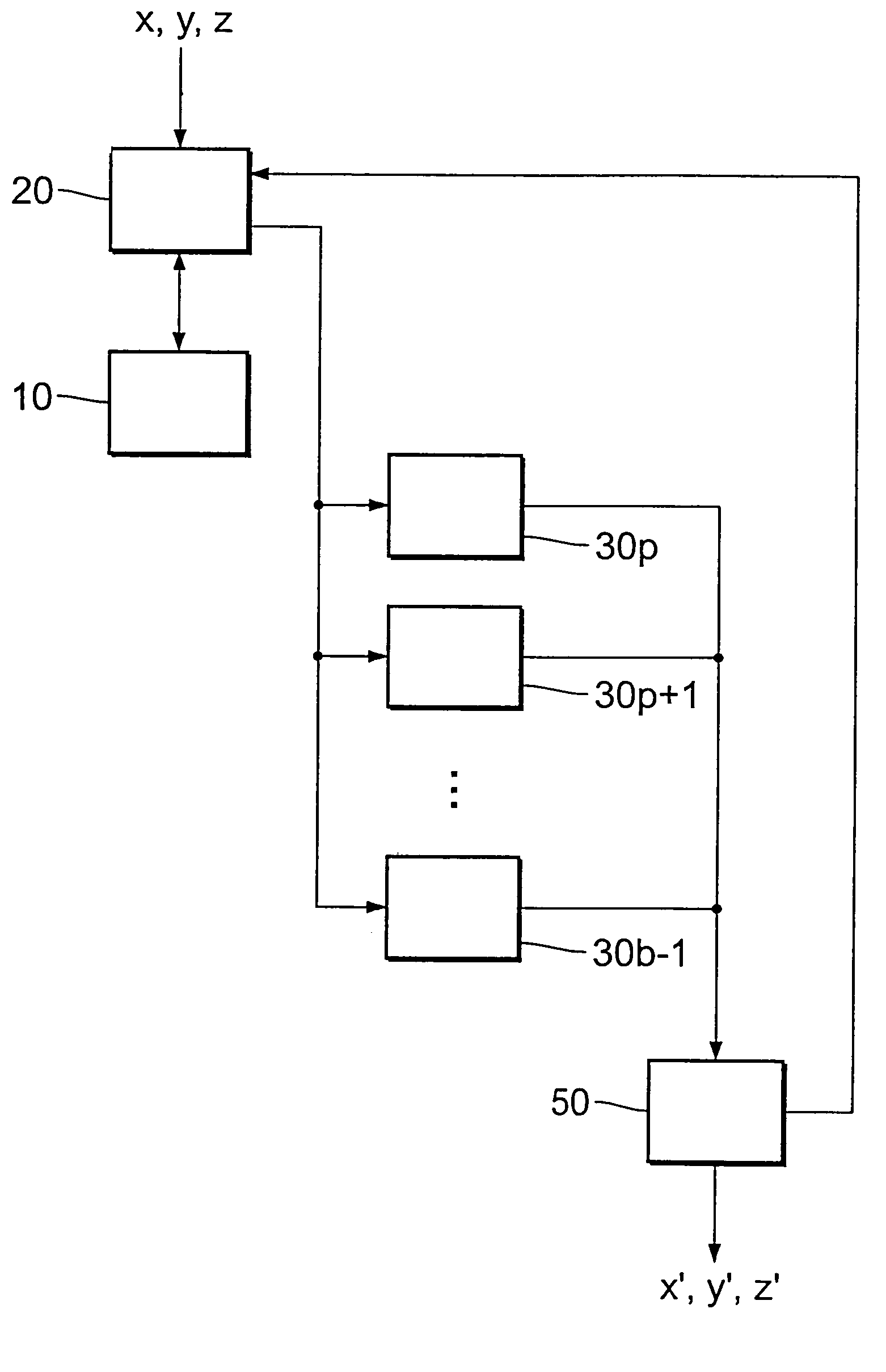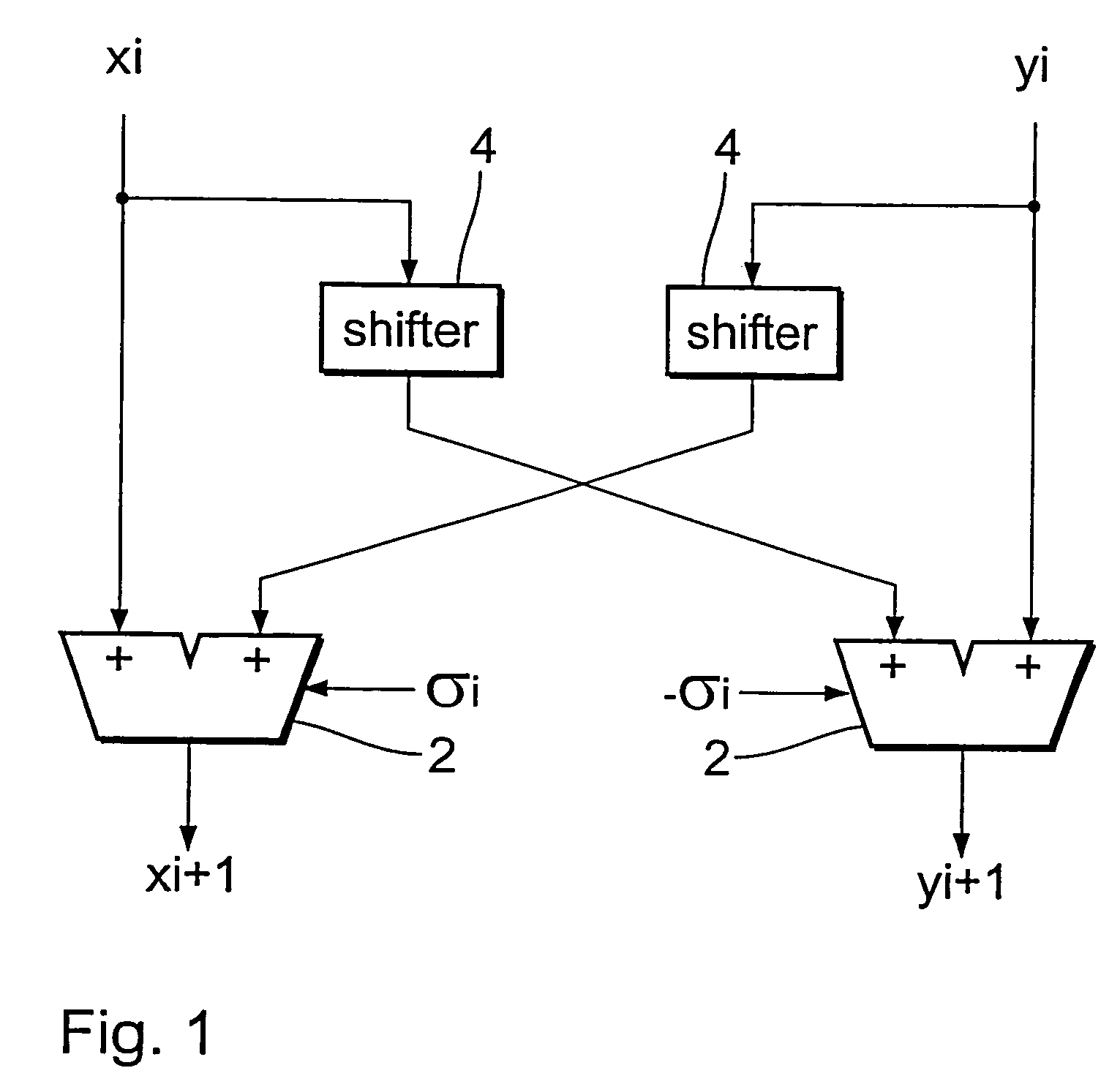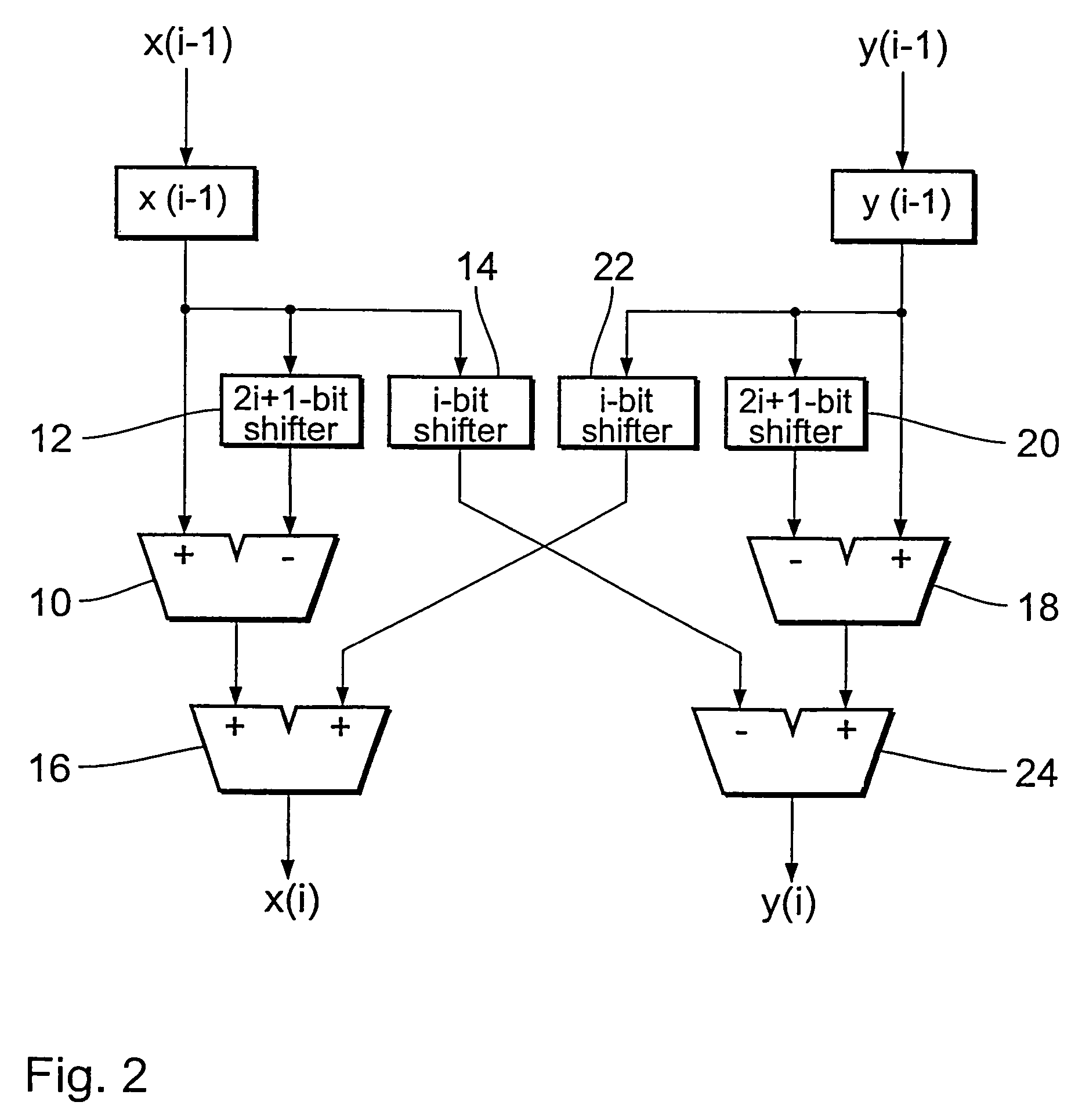CORDIC unit
a cordic unit and unit technology, applied in the field of cordic units, can solve the problems of reducing the activity of the overall circuit and thus the power consumption, and achieve the effect of reducing the angular range of the rotary angle to be actually calculated by the cordic uni
- Summary
- Abstract
- Description
- Claims
- Application Information
AI Technical Summary
Benefits of technology
Problems solved by technology
Method used
Image
Examples
first embodiment
[0047]Now the implementation according to the invention of the CORDIC algorithm is described hereinafter. As has been described above, in the conventional CORDIC algorithm the rotary angle is approximated by elementary rotations both in the clockwise direction and also in the counter-clockwise direction. In contrast thereto, in accordance with the invention, the rotary angle is approximated exclusively by elementary rotations in a single direction. This means that all elementary rotations are executed either in the clockwise direction or in the counter-clockwise direction. In order to permit that, it is ensured that no rotation is effected, which would have to be followed by a rotation in the opposite direction. In other words, after each elementary rotation, the procedure involves determining the residual angle by which rotation is still to be rotated and then that residual angle is compared to the elementary angles. Elementary rotations, the elementary angle of which is greater th...
second embodiment
[0056]As discussed in the opening part of this specification the omission of iteration steps generally involves a non-constant scaling factor. By virtue of the clever choice of the elementary angles αi however it is possible to obtain a constant scaling factor, in spite of omitting iteration steps. The scaling factor is constant in the following second embodiment for the implementation according to the invention of the CORDIC algorithm.
[0057]In order to obtain a constant scaling factor the elementary angles αi must be so small that the relationship sin αi˜αi is sufficiently precisely satisfied. Sufficiently precisely means here that αi must be sufficiently small so that the errors which occur by virtue of the fact that sin αi is approached by αi are less than the smallest number which can be represented as a binary number with a given word length b in respect of the selected implementation of the CORDIC algorithm. With a word length of 16 bits for example a shift of each binary numb...
PUM
 Login to View More
Login to View More Abstract
Description
Claims
Application Information
 Login to View More
Login to View More - R&D
- Intellectual Property
- Life Sciences
- Materials
- Tech Scout
- Unparalleled Data Quality
- Higher Quality Content
- 60% Fewer Hallucinations
Browse by: Latest US Patents, China's latest patents, Technical Efficacy Thesaurus, Application Domain, Technology Topic, Popular Technical Reports.
© 2025 PatSnap. All rights reserved.Legal|Privacy policy|Modern Slavery Act Transparency Statement|Sitemap|About US| Contact US: help@patsnap.com



